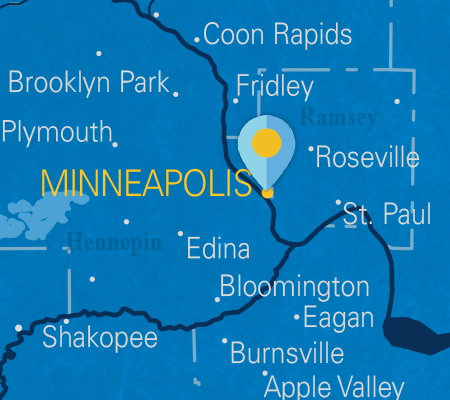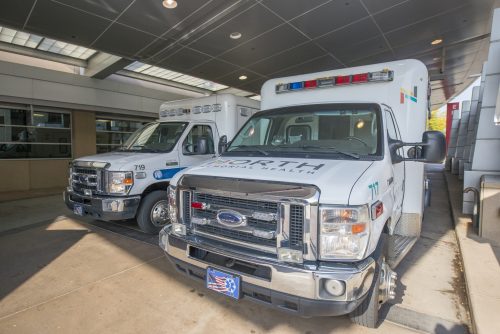
Through in-home visits, paramedics create one-on-one connections and better health results for patients.

An innovative trend in the paramedic profession has been redefining how patients, doctors and family members come together to create better health outcomes. In the Twin Cities metro, North Memorial Health has established itself as a leader in bringing paramedic care into the homes of patients. This is community paramedicine.
“Our mission is to deliver mobile, compassionate care to patients outside the walls of the hospital and clinics,” said Dr. Pete Tanghe, medical director for the community paramedic program at North Memorial Health Clinic. “There’s a lot of variety in what we do, but we’re essentially helping people manage complex health situations so that they can stay healthy and stay out of the hospital.”
“A high percentage of 911 calls and emergency department visits are not life-threatening emergencies,” Tanghe said. “By working in coordination with primary care clinics, community paramedicine helps people with chronic conditions get the care they need while also reducing unnecessary trips to the emergency room.”
The administrators of the community paramedic program analyze patient data and medical records to identify high-risk patients who are most likely to be readmitted to the hospital. “After someone is discharged, we want a community paramedic to stop at their home within two or three days and see how they’re doing,” Tanghe said.
Community paramedics travel to home visits in their own vehicles, not an ambulance. In addition to checking vital signs, community paramedics often assist patients with understanding medication and medical instructions and identifying lifestyle or environmental factors that may be influencing health.
“Our current focus is on people who have hypertension or diabetes, though some may have heart failure, asthma or chronic obstructive pulmonary disorder,” he said. “We don’t specifically get referrals for behavioral or mental health patients, but some of our most challenging cases are compounded by a behavioral health diagnosis, like depression or anxiety.”
Tanghe and his team say that the most successful customers get regular in-home visits and are better able to manage their diagnoses, prevent unnecessary hospital visits and feel more empowered in their health care situations.
“We’re able to fill in the gaps because we’re experts in transitions. Our program has been successful in showing that the people we’re involved with go to their primary care appointments more, are able to complete their preventive care at a higher rate than they could previously, and they use the emergency department less and are hospitalized less,” he said.
Blue Cross and Blue Shield of Minnesota got involved in the North Memorial community paramedic program by funding a pilot program aimed at reducing hospital readmissions among elderly patients.
“The Blue Cross pilot helped us explore the practice of community paramedicine in new arenas, and find out where it works well or less well,” Tanghe said. “It also helped us standardize some of our processes, like coordinating our welcome package and how we greet new customers.”
Tanghe also says the program makes good business sense for the hospital.
“Fundamentally, this program eliminates waste by helping people get the right service at the right time by the right people. For the hospital administration, it means improved financial performance, population care and employee satisfaction.” Tanghe says that, depending on the customer, each dollar spent on community paramedics can save up to $11 in unnecessary care.
“I’m amazed by what the community paramedics are able to accomplish on a daily basis,” Tanghe said. “We’re trying to make something that requires heroic efforts into a standard process to improve people’s lives.”
